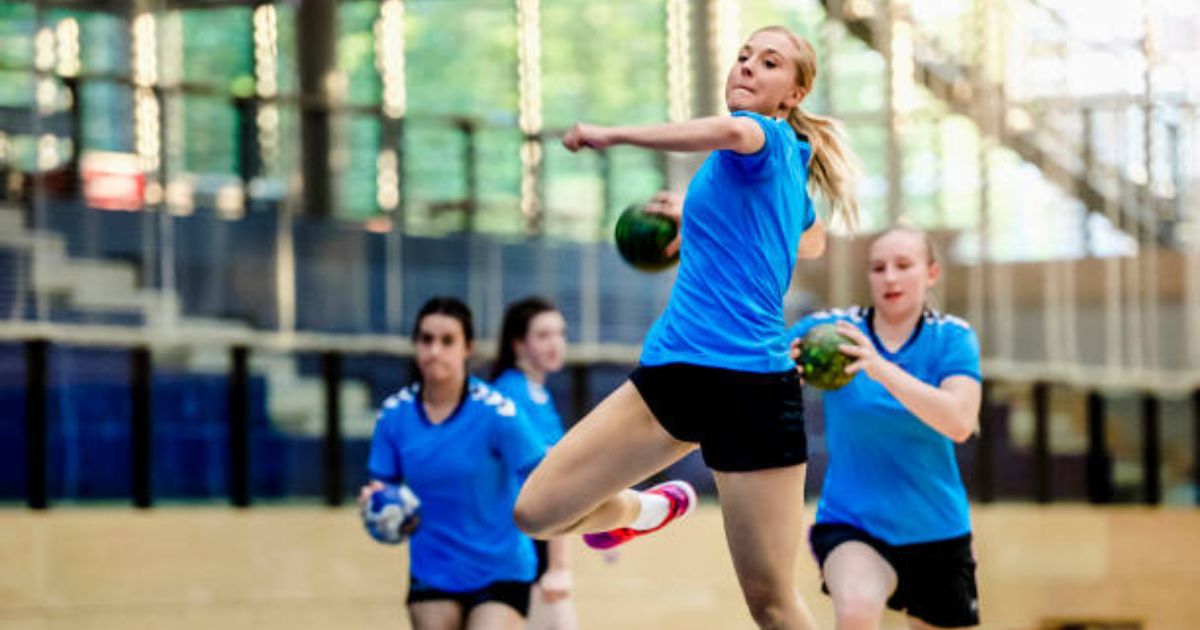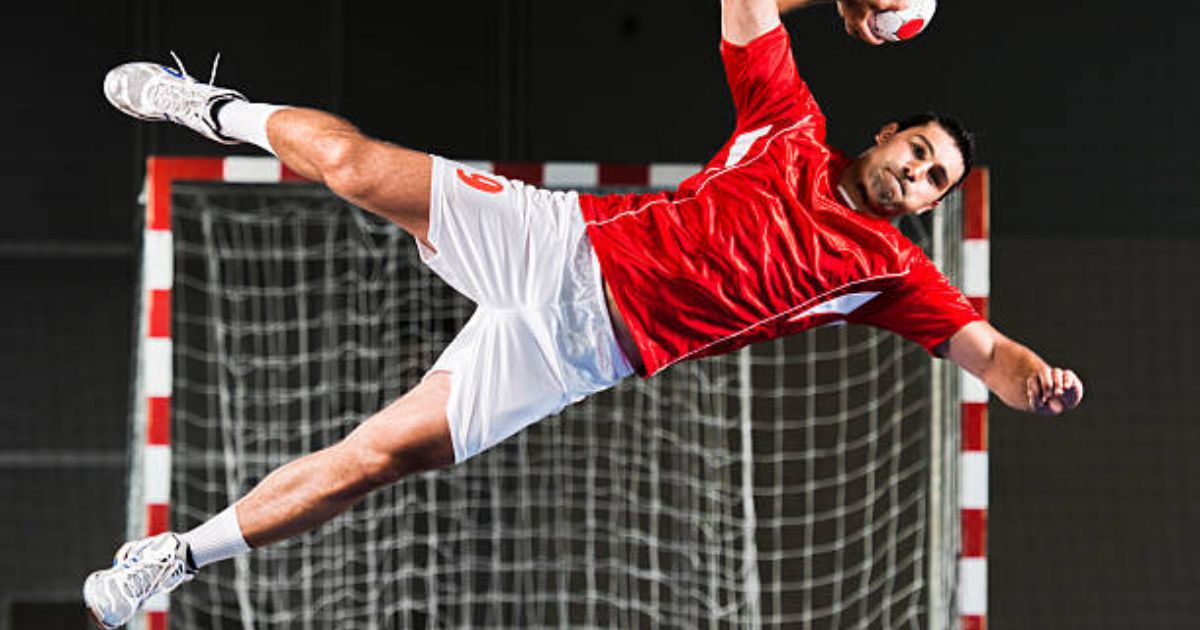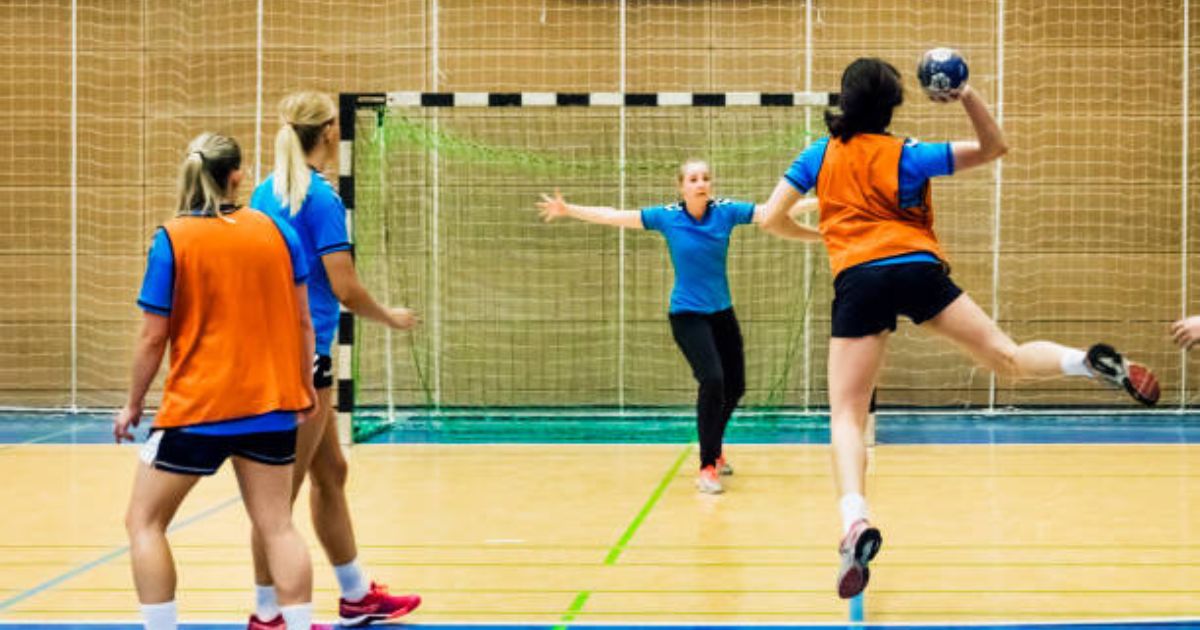The rules of Handball, Handball is a fast-paced and dynamic team sport, requires a deep understanding of its rules to fully appreciate the game. Let’s delve into the fundamental regulations that govern this exciting sport.
Table of Contents
ToggleHandball, also known as team handball or European handball, is a dynamic and exhilarating team sport that combines elements of basketball, soccer, and water polo. It’s a game of speed, skill, and strategy, making it a captivating spectacle for both players and spectators.
Basic Rules of Handball
Handball is a fast-paced team sport where the objective is to score more goals than the opponent by throwing a ball into their net. Players can use their hands, arms, head, and torso to handle the ball, but cannot touch it with their feet or below the knee.
They can only hold the ball for three seconds without dribbling or passing, and can take a maximum of three steps without dribbling. Physical contact is allowed within certain limits, and fouls result in penalties or free throws.
- Player and Team Composition:
- Each team consists of seven players on the court, including a goalkeeper.
- Substitutions are allowed during stoppages.
- Objective:
- To score more goals than the opposing team by throwing the ball into the opponent’s goal.
- Ball Handling:
- Players can use their hands, arms, head, torso, thighs, and knees to handle the ball.
- The ball cannot be touched with the feet or any part below the knee.
- A player can hold the ball for a maximum of three seconds without dribbling or passing.
- A maximum of three steps can be taken without dribbling.
- Fouls and Penalties:
- Personal fouls, such as pushing, holding, or tripping, result in free throws or penalties.
- Technical fouls, such as delaying the game, are also penalized.
- A penalty shot is awarded for severe fouls within the penalty area.
- Goalkeeper:
- The goalkeeper can use any part of their body to stop the ball within the goal area.
- They are restricted to a specific area of the court.
- Scoring:
- A goal is scored when the ball completely crosses the goal line.
- The team with the most goals at the end of the match wins.

Advanced Rules of handball
Handball involves complex strategies and tactics beyond the basic rules. Factors like defensive formations, offensive plays, and player positioning significantly influence the outcome of a match.
- Defensive Strategies: Teams employ various defensive formations, such as man-to-man, zone defense, and hybrid systems.
- Offensive Strategies: Quick passing, creating scoring opportunities, and utilizing player strengths are crucial offensive elements.
- Set Plays: Pre-designed plays for specific situations, such as power plays or last-minute shots.
Key Handball Terms
- Throw-off: The start of the game or after a goal is scored.
- Free throw: Awarded for minor fouls; the player takes a shot without opposition.
- Penalty shot: Awarded for major fouls within the penalty area; a one-on-one situation against the goalkeeper.
- Exclusion: A player is sent off for a certain period for a serious foul.
- Disqualification: A player is permanently removed from the game for a severe foul.
Rules of handball and gameplay
- Fast-paced action: Handball is characterized by its non-stop action, with players constantly moving and passing the ball.
- Physicality: While physical contact is allowed, it’s regulated to prevent excessive roughness. Defenders can use their bodies to block attackers, creating intense battles for possession.
- Teamwork: Successful handball teams rely on excellent teamwork, with players working together to create scoring opportunities.
- Skill: Players need a combination of skills, including passing, shooting, dribbling, and defensive positioning.
Handball Court and equipment:
Dimensions and size of handball and using equipment:
- Court Dimensions: The court is rectangular with specific measurements for the playing area, goal area, and penalty area.
- Ball: The handball is slightly smaller and softer than a basketball.
Important rule number 3 of handball
The rule of 3 in handball refers to the limitation on a player’s movement while in possession of the ball. A player can only take a maximum of three steps without dribbling, passing, or shooting the ball. This rule keeps the game fast-paced and prevents players from stalling the action.
Top 5 skill in Handball
- Dribbling: Maintaining control of the ball while moving.
- Passing: Throwing the ball accurately to a teammate.
- Shooting: Throwing the ball into the goal to score.
- Defense: Preventing opponents from scoring and regaining possession.
- Positioning: Understanding where to be on the court based on offensive or defensive roles.
Pass in Handball
A pass in handball is when a player throws the ball to a teammate on the court. It’s a fundamental skill used to move the ball up the court, create scoring opportunities, and evade defenders.
click to read about Why Kenyans so good at running.
There are different types of passes, such as chest passes, bounce passes, and overhead passes, depending on the distance and situation.
Foul in Handball
A foul in handball occurs when a player breaks one of the game’s rules. This can include illegal physical contact, such as pushing, holding, or tripping, as well as infringements on ball handling rules, like holding the ball for too long or taking more than three steps without dribbling.

The severity of the foul determines the penalty, which can range from a free throw to a penalty shot or even disqualification.
Are there 12 players in handball?
No, there are not 12 players in a handball team. Each team has 7 players on the court at a time, including the goalkeeper. There can be additional players on the bench as substitutes.
What is not allowed in handball?
In handball, the following actions are not allowed:
- Touching the ball with your feet or any part of your leg below the knee.
- Holding the ball for more than three seconds without dribbling or passing.
- Taking more than three steps without dribbling.
- Using excessive force or illegal physical contact, such as pushing, tripping, or hitting.
- Entering the goal area (six-meter line) without possession of the ball.
Handball is a fast-paced and exciting sport with a rich set of rules. By understanding rules f handball, you can appreciate the intricacies of the game and enjoy watching or playing at a higher level.







